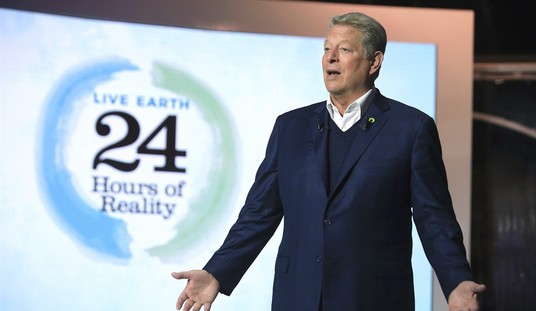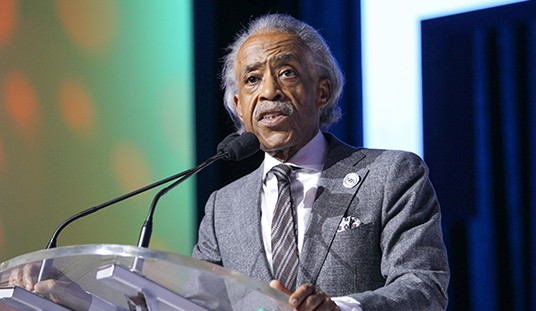WASHINGTON – President Trump’s first budget takes a meat ax to a long list of domestic programs, eliminating funding for old stalwarts like the community development block grant program and the Corporation for Public Broadcasting, slicing into traditional areas of diplomacy and annihilating federal environmental efforts while dedicating more money to defense, veterans and building a wall along the Mexican border.
The proposed $1.15 trillion spending package for Fiscal Year 2018, which begins Nov. 1, makes huge cuts from top to bottom on the domestic side while increasing Pentagon funding, which already represents the federal government’s largest area of expenditure, by 10 percent.
The Trump administration’s federal spending blueprint was issued in what is known as a “skinny” budget on Thursday, with additional details to be released when the comprehensive executive budget plan is offered later in the spring.
Mick Mulvaney, director of the Office of Management and Budget who pieced together the spending plan, characterized the package as “the ‘America First’ budget.”
“In fact, we wrote it using the president’s own words,” Mulvaney said. “We went through his speeches, we went through articles that have been written about his policies, we talked to him, and we wanted to know what his policies were, and we turned those policies into numbers. So you have an ‘America First’ candidate, you have an ‘America First’ budget.”
Mulvaney said Trump was committed to increasing certain areas of the budget, particularly defense, without adding to a deficit already projected to reach $488 billion in FY 2018, requiring reductions in a host of other areas. To hike the Pentagon budget by $54 billion, he said, the president chose to make corresponding $54 billion cuts elsewhere.
“So the president accomplishes his priorities without adding to the deficit,” Mulvaney said. “That’s not to say the balance of the budget is balanced next year. It doesn’t. We’ve simply not added to the deficit in order to accomplish these policies.”
As a result, the State Department and the Environmental Protection Agency will be among the departments experiencing cuts, if Trump gets his wish list in Congress.
“In fact, you’ll see reductions in many agencies as he tries to shrink the role of government, drive efficiencies, go after waste, duplicative programs, those types of things,” Mulvaney said. “If he said it on the campaign, it’s in the budget.”
Despite expressions of optimism emanating from the White House, early returns indicate the spending package has no chance of passing in anything close to its current form. Democrats are united in opposition and some Republicans are already voicing criticism.
“I am disappointed that many of the reductions and eliminations proposed in the president’s skinny budget are draconian, careless and counterproductive,” said Rep. Hal Rogers (R-Ky.), former chairman of the House Appropriations Committee.
“We will certainly review this budget proposal, but Congress ultimately has the power of the purse,” Rogers said. “As the full budget picture emerges in the coming weeks, I am optimistic that we can work with the administration to responsibly fund the federal government, including those agencies which serve as vital economic lifelines in rural parts of the country that are still working to overcome substantial challenges.”
Sen. Lindsey Graham (R-S.C.) noted that “historically, presidential budgets do not fare well with Congress.” And while he appreciates the effort to further bolster defense, he said it comes “at the expense of national security, soft power and other priorities.”
“I look forward to working with my colleagues in Congress and President Trump to create a budget that is fiscally responsible, makes our country safer, and preserves wise investments in our future,” he said.
And Sen. John McCain (R-Ariz.) bluntly observed, “It is clear that this budget proposed today cannot pass the Senate.”
On the other side of the aisle, House Democratic Leader Nancy Pelosi, of California, and Whip Steny Hoyer, of Maryland, said the president’s spending package establishes that “he does not value the future of children and working families.”
“The president’s budget blueprint fails to recognize America’s strength depends on more than military spending; it depends on the power of our diplomacy, the health of our economy and the vitality of our communities,” Pelosi said. “This budget would devastate the innovation that drives our economy, the research that cures our diseases, the education that empowers our children, and the skills training programs that enable our workers to win the good-paying jobs of the modern economy. It is also a plan to endanger the food we eat, the water we drink, and the air we breathe.”
Democratic and Republican lawmakers alike are already actively opposing certain elements in the Trump budget that would have an adverse effect on their states or districts. Sen. Rob Portman (R-Ohio) announced that he intends to fight the president’s proposal to eliminate funding for the Great Lakes Restoration Initiative.
“The Great Lakes are an invaluable resource to Ohio and the Great Lakes Restoration Initiative has been a successful public-private partnership that helps protect both our environment and our economy,” Portman said.
And while he credited the Trump budget with taking positive steps in the area of education, Sen. Marco Rubio (R-Fla.), said he can’t support a proposed 28 percent cut to the international affairs budget affecting diplomatic efforts led by the State Department.
“These programs are integral to our national security and cuts at these levels undermine America’s ability to keep our citizens safe,” Rubio said. “In order to advance our national security interests, economic opportunity for our people and respect for human dignity everywhere, America’s leadership on the global stage is indispensable. I will be working to ensure Congress’ funding priorities allow America to play this role.”
The big problem facing the Trump budget isn’t Democratic opposition since the GOP controls both legislative chambers. It is the process called sequestration, which opens the budgetary process to filibuster in the Senate.
In 2010, with budget negotiations between Congress and President Obama seemingly going nowhere, lawmakers passed the Budget Control Act, which imposed $1 trillion in basically across-the-board cuts if no agreement could be reached.
A deal wasn’t made so the cuts were put in place, imposing caps on the amount that Congress can spend on defense and non-defense discretionary programs through 2021. This so-called sequestration prohibits Congress from shifting funds between defense and non-defense programs. And the whole process is open to a Senate filibuster, meaning Trump will need 60 votes in the upper chamber to escape the caps dictate.
Republicans hold 52 seats in the Senate. The prospect of picking up eight Democrats, and maintaining the allegiance of all the GOP lawmakers in the upper chamber, is near impossible.
As proposed, the Trump budget cuts discretionary spending by 1.2 percent, totaling $115 trillion, taking the tab to the lowest total since FY 2003. Almost every domestic program loses money. The Department of Health and Human Services faces an 18 percent cut, a cost of about $69 billion. Education loses 14 percent, Agriculture plunges 21 percent.
But the two agencies taking the biggest hits are the State Department (a 32 percent drop totaling $39.1 billion) and the EPA (31 percent), a total of about $5.7 billion.
The appropriation, should the budget pass, would be the lowest since the EPA’s inception in 1970. And it’s even more drastic than that – some of the funds cut in the State Department involve environmental programs.
During his successful presidential campaign, Trump made no effort to hide the fact that he holds the EPA in low esteem, feeling that it hinders economic development. He further questioned investment in addressing global climate change, which he at one time characterized as a hoax perpetrated by the Chinese government.
“Regarding the question as to climate change, I think the president was fairly straightforward,” Mulvaney said. “We’re not spending money on that anymore. We consider that to be a waste of your money to go out and do that. So that is a specific tie to his campaign.”
As for the cuts in Foggy Bottom, CNN quoted Secretary of State Rex Tillerson as saying “the level of spending that the State Department has been undertaking in the past, particularly in this past year, is simply not sustainable.”
The cuts, in addition to increased funding for defense, veterans affairs and homeland security, would set aside money for construction of Trump’s long touted border wall to further separate the U.S. and Mexico, thus, the president hopes, cutting down on illegal immigration.
Trump frequently vowed that Mexico would pay for the wall. But his preferred package would provide an immediate $1.5 billion for the proposed barrier with another $2.6 billion in the FY 2018 spending package.









Join the conversation as a VIP Member